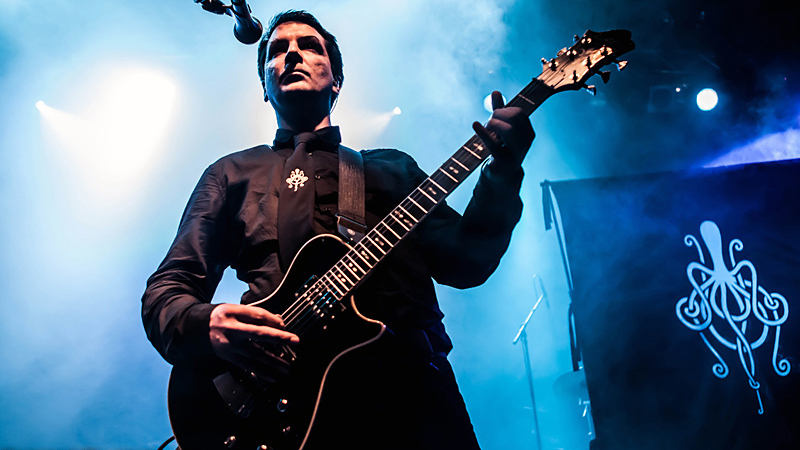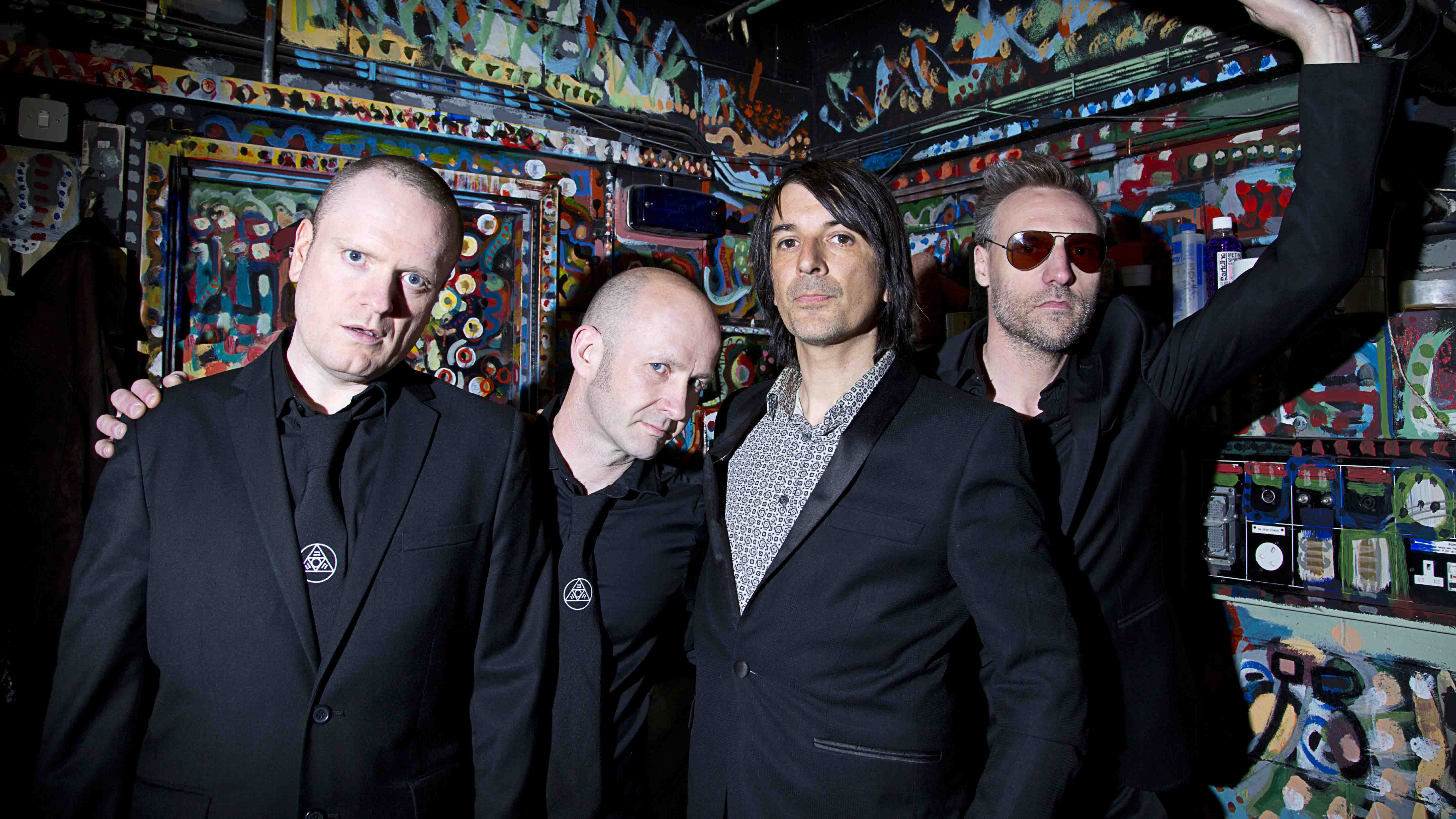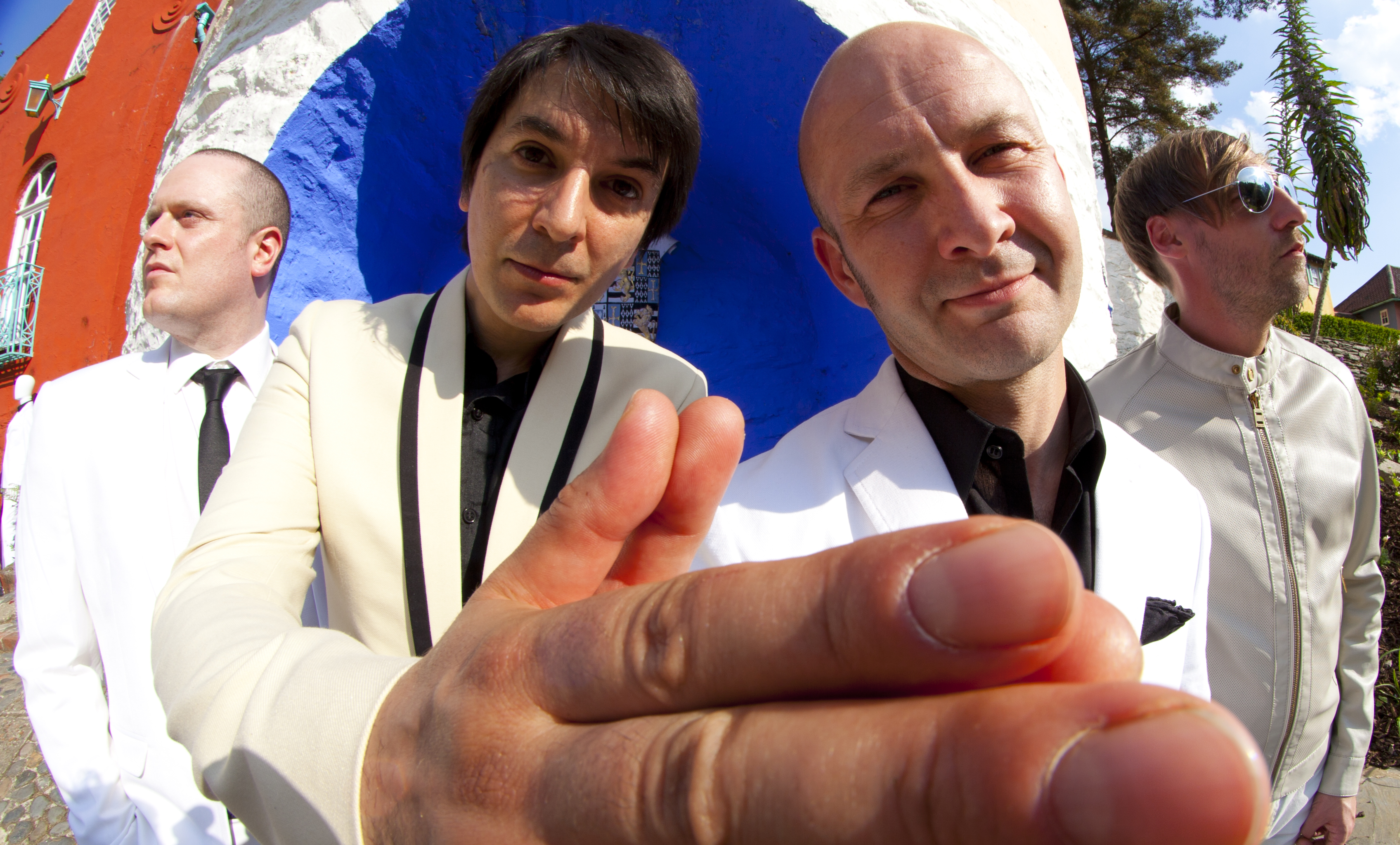Amplifier’s Sel Balamir on committing to tape and streamlining his guitar rig for Trippin' With Dr Faustus
Cult prog frontman shares his renewed tonal philosophy

The Dr will see you now
Amplifier, as the name suggests, are a band associated with walls of sound and walls of guitar amps, although like many other things, that's changed slightly over recent years.
Their gonzo space-rock sound, with echoes of Pink Floyd, Soundgarden and Tool, has been refined over five full-length albums and countless EPs. Amplifier's 2010 opus, The Octopus took several years to realise, and rightfully earned its reputation as a sprawling classic of modern progressive rock.
Over their last two records, the wistful, romantic Echo Street and hard-hitting Mystoria, they've grown their fanbase substantially, refining their sound down into a punchier, more accessible, but in many ways no less experimental form. They've also had some line-up changes, with former Oceansize axe-man Steve Durose joining as a second guitarist and original bassist Neil Mahony departing.
The timespan making Dr Faustus was that of making an overdub record… bit by bit, piece by piece. It's probably much more like the first two records
The Octopus was a fully DIY affair, with the band wary of record labels after being stung by Sony's purchase of Music For Nations around the time of their self-titled debut. Hung out to dry, Amplifier eventually had to buy back their own record, only to have mixed fortunes with their next label, SPV, on which they reissued Amplifier and their second LP, Insider.
Mystoria was released by progressive rock powerhouse Superball, but as Amplifier began to work towards LP number six, they found themselves experiencing déja vu as Superball's parent company was bought out by Sony. The band decided the time was right for a change, and the new LP would see them amicably returning to the DIY sphere.
That's not the only shake-up, either; Trippin' With Dr. Faustus was recorded very differently to Mystoria, with frontman, guitarist and producer Sel Balamir tracking on a vintage Otari tape machine that they had to restore themselves.
The recording process took nearly two years, and unlike the Mystoria sessions, where the band went to the studio after spending three months rehearsing, it was "completely different; we did it on the tape machine so it was like an overdub record," according to Sel.
"The timespan making it was that of making an overdub record, of several months, many months, bit by bit, piece by piece. It's probably much more like the first two records, because they were done like that, whereas the ones after that were done much more 'live.'"
Sel describes piecing together songs "in my little box room" in London, before making the trip up to the band's practice and studio space in Manchester to finish material.
It was really back to basics, and I really enjoyed that - principally because there's only 24 tracks... we ended up stripping everything
"I'd come and get together with Matt [Brobin, drums] and we'd go away together, because it's easier because of our domestic situations, and just smash it out." Sel continues. "It might be two in the morning, but then we'd just set the mics up and go 'yeah, we're playing it now.'"
The long-distance commute didn't pose a problem, though.
"It was nice because I'd come up and see my friends and we'd spend time together and do music together. It was very defined, unlike when we were making The Octopus, where every moment was just drifting from one moment to the next. This was a very different way of doing it; this is the way of older guys that have got families and things like that - that's how you have to work.
"Your circumstances dictate even the kind of music that comes out of it. If your circumstances are that, that's how you have to work now; you can't really spend four years jamming!"
This change-up in recording equipment also had a number of practical implications, and a stripped down approach was needed.
"It was really back to basics, and I really enjoyed that - principally because there's only 24 tracks... we ended up stripping everything: there's a tom and floor tom as there's not room for anything else."
Moreover, mistakes and imperfections couldn't be papered over later, which in some ways saved Amplifier from themselves.
"When everything goes to tape, that's it: you commit the sound to tape. There's no balancing it all up after, when it's in the computer, to try and put everything in phase - you just have to get it right. There was a lot more emphasis put on spending more time at the front end, getting it set up."

Amp revamp
In terms of equipment, Sel also found himself making a change. Gone was the wall of amps.
Normally, he says, they'd "have six amps set up, and they'd all be mic'd. We'd record everything and then get a phase lock and try and make the greatest possible sound... but we just couldn't do that."
This time, Sel went for the 'less is more' approach.
I only used one amp... I ended up doing almost everything on my Mesa/Boogie [F30] combo. It's a little bastard, it sounds like a motherf**ker
"I only used one amp... I ended up doing almost everything on my Mesa/Boogie [F-30] combo. It's a little bastard, it sounds like a motherfucker, I'm telling you," he chuckles, describing using a Radial JDX48 and a Radial phase tool to tune in the phase of the amp, "When it locks in phase, it sounds humongous, it's amazing. I'm telling you, just buy one."
With an arsenal of amps at his disposal, other contenders did get a look-in for overdubs however, with a Hayden Mofo ("that's fucking great") and hand-built Guru head also featuring on the record…
"[It was made] by some Indian guy that's like The Dude from The Big Lebowski. I just met him travelling in India, and because he works in the music industry - vaguely - this guy said, "Yeah, can you be my rep?" So he brought back three of these heads... I don't even know if this guy still makes them or exists or what. It's great, it's a stoner machine... it's better-sounding than an Orange head, but it's in that area."
For a band notorious for their pedal usage, it might also come as a surprise that comparatively few were used on this record.
"It's different to normal," Sel agrees. "All the other albums it was pretty much the live pedal [setup], and using the amp distortion isn't practical on stage because it's too fixed; there are too many distortion nuances in this kind of music."
This time, though, even Sel's infamous fuzz pedals didn't get a look in for the gain sounds; when asked whether fuzz was responsible for the thick layers of guitar, he says, simply, "Only for specific distortion effects; most of it was amp distortion from the F30... it's just got a warmer quality about it I think."
Long-time fans no doubt will be reassured to know that the full monster ’boards will still be appearing live. As for live amps, Sel plans to stick to his usual two-amp rig of "my original two: the Peavey [Blues Delta] and the Tech 21."

Tried and tested
The guitars are a familiar story for any fans of the band. Sel used his main six-string, a 1973 Gibson SG, for most of the tracks.
I only ever use my main number one wife [guitar]... it's the one that sits in the middle: it's not too dark, not too bright, not too heavy, it's not too insubstantial, it's the Goldilocks guitar - just right
"Well, I only ever use my main number one wife [guitar]... it's the one that sits in the middle: it's not too dark, not too bright, not too heavy, it's not too insubstantial, it's the Goldilocks guitar - just right."
For additional overdubs, however, his other SGs were drafted in.
"Normally, I'll use them for filling in above or below. I've got the single coil '68 and the other bully-boy bruiser ['73] that's really heavy, so it's really dark... you just hold it and it feels like you're holding a baseball bat.
“It's really funny, the neck dimensions are the same, but it feels completely different, and holding the strings down is a real commitment. It's twice the weight of the '68."
In terms of composition, the record was written with careful attention paid to the overall project.
"We'd have a couple of tunes, and we'd pretty much just work on those, so they were done in bunches of three or four tunes at a time. I quite like working that way, because it keeps everything kind of mixed up, with lots of new flavours coming along, because it can get kinda dull just working on a record really intensely with the tunes going around and around, and some of the best songs came along right at the end.
“You can much more write to order, so as things start building up so you can kinda feel what the holes are in the record and imagine what kind of song you'd do. Maybe the shape of the record needs a pause there, so we'll design a pause. That's a nice, creative way of making a record."
The final track to be recorded, Anubis, came out of this holistic approach.
"We'd literally finished mixing [the record] and everything, and listening back to it we were like, 'It needs a palette cleanser there', so we wrote that in an afternoon and recorded it the next day."
Though the band were happy with the track, its genesis and recording were somewhat stressful for co-guitarist Steve Durose, as Sel recalls.
"Steve had a massive panic attack, because he hates working like that. He needs to know three weeks in advance, not me just calling up going, 'Yeah, come on, I've written a song; let's just learn it and record it tomorrow!'"
Trippin' With Dr Faustus is out now via Rockosmos.
Alex Lynham is a gear obsessive who's been collecting and building modern and vintage equipment since he got his first Saturday job. Besides reviewing countless pedals for Total Guitar, he's written guides on how to build your first pedal, how to build a tube amp from a kit, and briefly went viral when he released a glitch delay pedal, the Atom Smasher.

